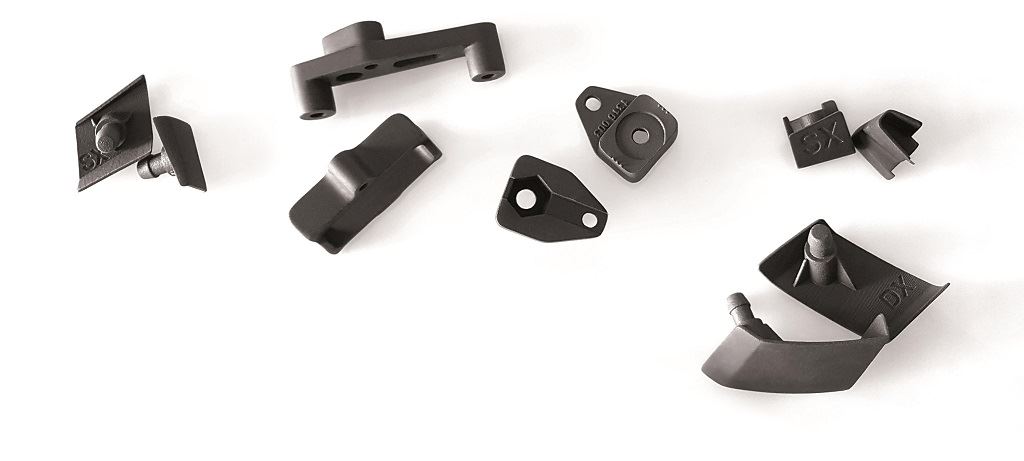![3D printed parts made in Windform P1 [Image: CRP Technology]](https://fabbaloo.com/wp-content/uploads/2020/05/Windform-P1_img_5eb098e276fd4.jpg)
Windform’s new P-LINE material family is targeted at high-speed production 3D printing.
The first material in the line, P1, is a polyamide (PA) material designed for use with High Speed Sintering (HSS) 3D printing technology.
CRP Technology lists as P1’s primary characteristics:
-
Isotropic material (X, Y, Z axis)
-
High Flexibility
-
Insulated material (CTI rating of 600)
-
Full density
-
High recyclability
The material fits in with both CRP’s developing strategies and the increasing focus in the 3D printing industry overall on production applications.
“‘P’ stands for Production. We created this new range of materials for High Speed Sintering, the new 3D printing process we integrated in-house: Windform P-LINE materials combined with HSS technology, allows for the manufacturing of small 3D printed production component,” said Franco Cevolini, VP and CTO at CRP Technology.
“Our aim is to constantly creating technological breakthroughs. We invest in Research and Development as well as new technology: with Windform P-LINE, we want to provide even more tangible, turnkey solutions which can satisfy any customers’ requirements.”
P1 was, the company notes, “engineered for a faster production of small end-use parts in higher volumes at lower cost” — again fitting neatly into a growing area of interest in additive manufacturing. Furthering this, CRP notes that it also offers properties “similar to injection molding.”
For 3D printing to take its place alongside traditional manufacturing technologies, several boxes must be ticked. Prime among them are comparable quality and competitive pricing. Improvements in either or both of these areas would, naturally, enhance its positioning.
If 3D printing cannot compete in these initial areas, other benefits fall by the wayside. It doesn’t matter, for example, if a part can be made in a new geometry or on-demand if it doesn’t offer the robustness of its predecessor or if it costs twice as much to make.
HSS is an intriguing technology that has the potential to make a major statement in manufacturing. Materials suited for the process, particularly with focus on quality and mechanical properties, will provide a necessary piece to the puzzle.
CRP, for its part, has been repositioning its Windform materials. The company shifted its commercial strategy last month such that Windform is now available only to OEMs and through CRP’s own service offerings, rather than through outside service bureaus.
The reasoning behind that move, CRP said upon that announcement, was to “ensure the highest quality in the manufacture of 3D printed components in Windform.” That follows their own recent recent achievement of the ISO 9001: 2015 standard — highlighting the two keys of the P1 announcement: quality and production.
P1 is just the first material in the P-LINE family; it sounds like there will be much more to come.
CRP notes that P1 has example applications in applications including:
-
Electrical (Connectors, enclosures, housing for electronics)
-
Consumer and household goods (packaging and design)
-
Industrial products (interior fittings, furniture parts, mock-up)
-
Medical (soles)
-
Automotive (interior design, ventilation flaps, small steering wheel paddle shifters)
Via CRP











An inventive designer has developed a method for producing 3D paper objects using recycled paper and 3D printed molds.